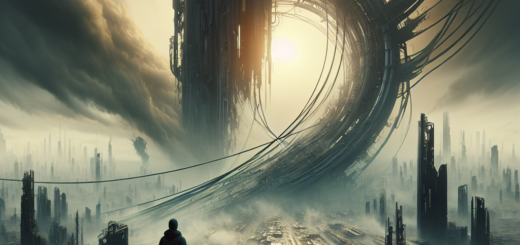Beyond the Dystopian Genre: How Writers Are Pushing the Boundaries of Apocalyptic Fiction
The dystopian genre has long been a staple of science fiction literature, exploring dark and often bleak visions of the future where society has collapsed, leaving humanity to struggle for survival in a harsh and unforgiving world. However, in recent years, writers have been pushing the boundaries of apocalyptic fiction, creating new and innovative ways to explore the end of the world as we know it.
One of the ways in which writers are expanding the dystopian genre is by focusing on different aspects of society and the environment. While traditional dystopian novels often center around oppressive governments or totalitarian regimes, authors are now exploring how other factors such as climate change, pandemics, and technological advancements can lead to the downfall of civilization. For example, Emily St. John Mandel’s novel “Station Eleven” imagines a world ravaged by a deadly flu pandemic, while Jeff VanderMeer’s “Annihilation” explores the destructive impact of a mysterious environmental phenomenon known as the “Area X.”
Another trend in apocalyptic fiction is the blending of genres, combining elements of science fiction, fantasy, horror, and even romance to create new and unique narratives. For example, N.K. Jemisin’s “The Fifth Season” combines elements of fantasy and science fiction to tell the story of a world plagued by catastrophic seismic events, while Colson Whitehead’s “Zone One” mixes elements of horror and satire in its depiction of a zombie apocalypse.
Furthermore, writers are also challenging traditional notions of heroism and survival in apocalyptic fiction, presenting more diverse and complex characters who must navigate the moral dilemmas and ethical challenges of a post-apocalyptic world. For example, Octavia Butler’s “Parable of the Sower” follows the journey of a young black woman as she forms a new community in the aftermath of societal collapse, while Cormac McCarthy’s “The Road” explores the bond between a father and son as they struggle to survive in a desolate and dangerous world.
Overall, the evolution of apocalyptic fiction reflects a broader cultural shift towards more nuanced and thought-provoking explorations of the end of the world. By pushing the boundaries of the dystopian genre, writers are challenging readers to reconsider their assumptions about the future and the resilience of humanity in the face of adversity. As we continue to grapple with real-world threats such as climate change, pandemics, and political unrest, the imaginative worlds of apocalyptic fiction offer a space to reflect on the consequences of our actions and the possibilities for redemption and renewal in the face of catastrophe.













